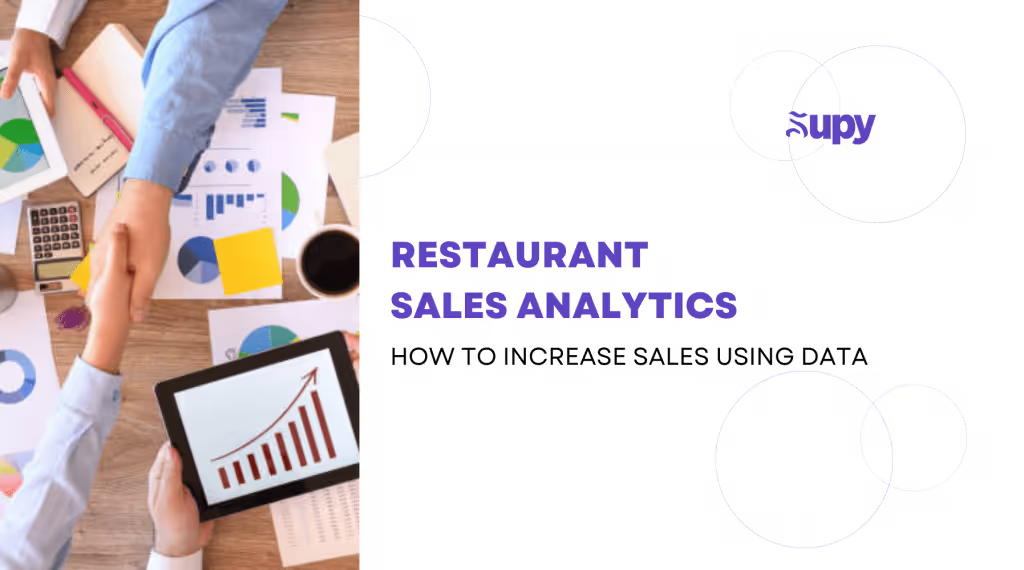The Future of Restaurant Management Software: Trends to Watch in 2024

According to recent trend reports, the restaurant industry finally recovered from COVID-19 losses in 2024. This year, both full- and quick-service restaurant sales have been reported to their pre-pandemic levels. Yet, like in many other industries, the food service industry has been hit hard by historic levels of inflation. In this difficult economic climate, many restaurants have been forced to adjust their business plans to account for labor shortages and supply-chain issues.
- Challenges Facing the Food and Beverage Industry in 2024
- Advantages of Restaurant Management Software
- Restaurant Management Software Trends to Be Aware of in 2024
- Case Studies of Successful Implementations
- Choosing the Right Restaurant Management Software for Your Business
- Supy's Role in Integrating Restaurant Management Software
- Conclusion
- About Supy
In this article, we’ll be exploring how new and emerging technologies are shaping the future of restaurant management. In the year 2024, many businesses seem to have understood the significant role technology can play in navigating the year ahead. In particular, restaurant management software seems to be leading the front of this revolution, providing solutions that are both efficient and easy to adapt to complex multi-chain operations.
The latest restaurant management systems on the market are designed to give owners access to real-time restaurant data, provide seamless integration across various platforms, and offer scalable solutions that meet the demands of any growing business. By staying ahead of these trends, restaurant owners and managers can ensure their businesses remain competitive and thrive in an ever-changing industry landscape.
1. Challenges Facing the Food and Beverage Industry in 2024
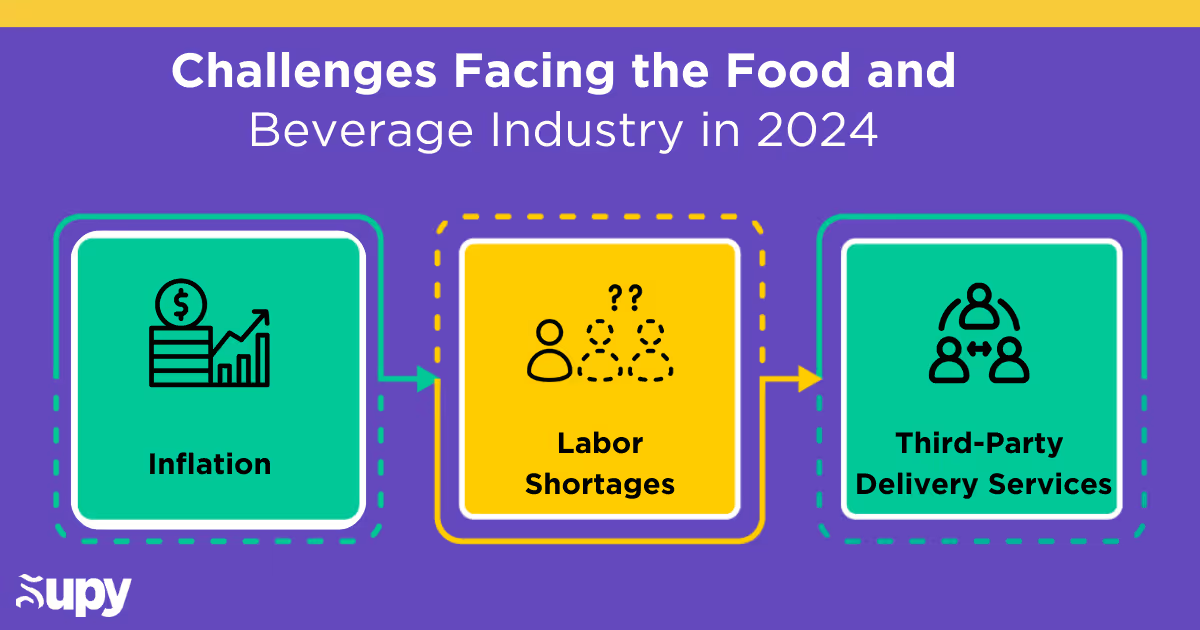
Although the restaurant industry has officially been declared “recovered” from the pandemic, it still faces several pressing challenges:
Inflation
As soaring inflation rates put pressure on suppliers, 97% of businesses have reported rising food costs according to recent data from the National Restaurant Association (NRA). While many restaurants are responding by hiking up the cost of items, this isn’t a viable option for all – with almost half of customers reportedly cutting back on eating out. Many businesses are trying to mitigate the impacts of inflation by investing in more efficient supply chain practices, exploring bulk purchasing agreements, and adopting dynamic pricing strategies to better manage cost fluctuations.
Labor Shortages
The pandemic-induced ‘great reshuffle’ has also resulted in a labor crisis for the food and beverage industry. As an unprecedented number of workers resign from hospitality positions, the NRA also reveals that 45% of restaurant operators claim they need more employees to meet consumer demand, despite the growing popularity of self-serve technology. With fewer staff available, restaurants have been struggling to maintain consistent service levels, leading to longer wait times and potentially lower customer satisfaction. To address this, some companies are looking towards implementing automated technologies in food preparation and service to alleviate staffing pressures.
Third-Party Delivery Services
Meanwhile, while off-premise ordering options initially helped many businesses unlock new revenue streams during the pandemic, third-party commission fees continue to bite into business profits. The growing reliance on third-party delivery services also introduces challenges such as lower control over delivery quality, and potential damage to brand reputation. By investing in robust delivery management systems and ensuring clear communication channels, many businesses can improve service quality.
2. Advantages of Restaurant Management Software

Menu management software comes with a number of exciting perks, including:
Improved Efficiency and Productivity
Restaurant reservation software automates many routine tasks, such as order taking, billing, and table management. This automation reduces the time workers and staff have to spend on tedious administrative tasks. Features like Supy’s real-time order tracking and automated kitchen display systems also help minimize errors and expedite service, thereby improving overall productivity.
Enhanced Customer Experience
With restaurant and menu management software, customers benefit from a more seamless experience. Online reservations, digital menus, and mobile ordering options are designed to streamline the dining process, reducing wait times and improving convenience. Additionally, integrated loyalty programs and personalized promotions can enhance customer satisfaction and encourage repeat visits by offering tailored incentives and rewards.
Better Inventory and Resource Management
Effective inventory management is crucial for minimizing waste and controlling costs. Restaurant software is designed to provide real-time tracking of inventory levels, helping to forecast needs and avoid overstocking or shortages. It also offers insights into resource usage, enabling better planning and more efficient procurement. This leads to cost savings and a more sustainable operation.
Data-Driven Decision Making and Predictive Analytics
Finally, advanced analytics and reporting tools allow operators to analyze sales data, customer preferences, and operational performance. These insights enable data-driven decision-making, helping managers identify trends, optimize menu offerings, and make strategic adjustments to enhance profitability. Some restaurant software even comes with a predictive analytics feature that can forecast future trends, allowing restaurants to proactively adapt to changing market conditions.
3. Restaurant Management Software Trends to Be Aware of in 2024
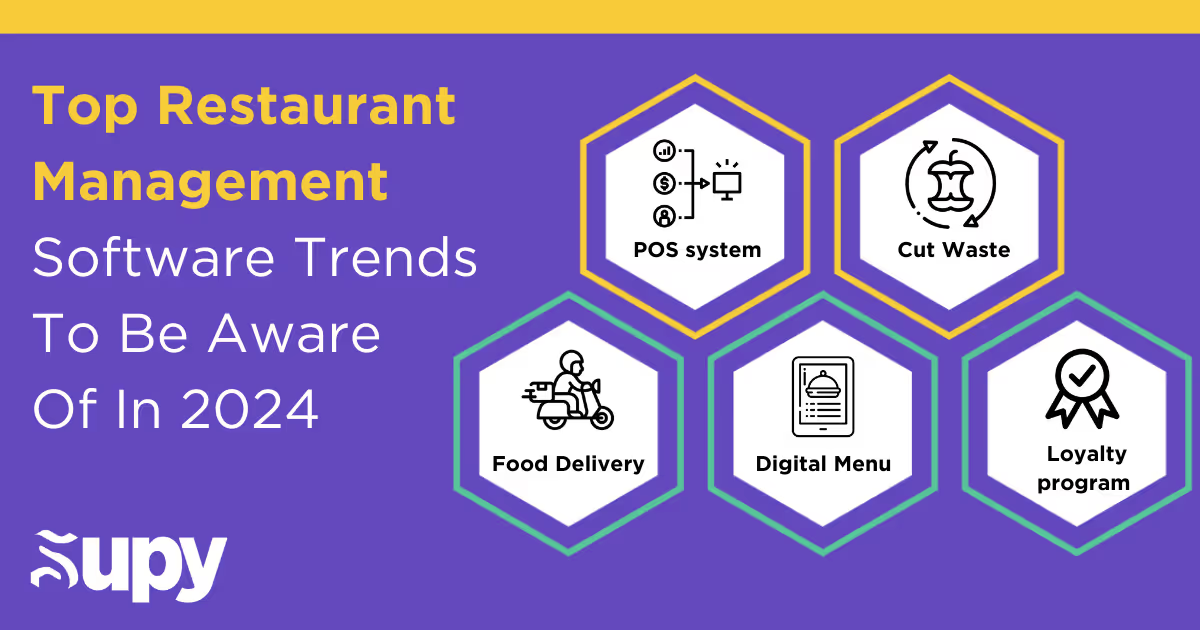
In 2024, many businesses seem to have understood the significant role technology can play in navigating the year ahead. Restaurant management software in particular seems to be leading the forefront of this revolution, providing solutions that are both efficient and easily adaptable to the complex needs of multichain operations.
Below are some of the top restaurant management software trends to be aware of in 2024:
- Restaurant POS Systems Are the New Standard
For decades, restaurant POS systems have been growing in popularity, providing businesses with a streamlined way to make orders, take payments, and streamline a range of other business processes. It’s hardly surprising then that mobile POS systems are one of the most common forms of technology used to make integrated payment processing easier and more efficient. If your business is looking to streamline its operation with cost-effective restaurant management technology, investing in Supy’s all-in-one platform is a simple no-brainer. s
- Cut Down on Waste with Restaurant Software
One way business owners are trying to shave down on costs without compromising on standards is by installing management software to track wasted stock and reduce food costs. Such software provides users with real-time reports on stock wastage levels, and as of recently is being used by up to 40% of hospitality businesses. With Supy’s restaurant inventory management software, you can cut down on your restaurant's inventory variance, reduce food costs, and eliminate food waste once and for all.
- Food Delivery Tech Is More Popular Than Ever
While consumer preferences were shifting at a gradual pace before 2020, the pandemic forced restaurants and quick-service businesses to pivot to online ordering, take-out, and delivery to remain afloat. This resulted in the rapid growth of third-party online ordering software like DoorDash, GrubHub, and Uber Eats. Here, the restaurant menu is available on a simple app on your phone for quick and easy online ordering. Despite in-person dining being available once more, however, restaurant owners may not be too happy to learn that food delivery apps remain more popular than ever, with research from Statista revealing that the apps collectively attracted 53.9 million US users in 2023 (compared to 45.6 million users in 2020).
- Digital Menu Kiosks Are Replacing Staff
Ever since the pandemic began, hospitality businesses have been struggling with employee management as service workers opted for jobs in other industries. As a result, an increasing number of quick-service and fast-casual restaurants have been turning towards installing digital kiosks for in-person or online ordering. With its user-friendly interface, this method of labor-management trend is only expected to become more popular going forward.
According to a survey by Tech. co, 36% of restaurants have purchased digital restaurant menu kiosks in the last 12 months, and a further 20% plan on purchasing the tech in the next year. This makes installing digital menu kiosks one of the most popular new investments of 2024, second only to software designed to minimize food costs.
- Loyalty Software Is On the Rise
Finally, as surging inflation rates put a damper on consumer spending, customer retention continues to be a major struggle for small food businesses. To fortify against these problems, the food and beverage industry has leaned heavily on customer loyalty software – a service that encourages repeat buying through rewards and follow-up offers.
According to one survey, 65% of restaurants had purchased the software in the last 12 months. These figures reveal how the technology is on the rise, as businesses continue to contend with fluctuating customer traffic.
4. Case Studies of Successful Implementations

Many restaurants have already experienced the transformative effects of Supy’s restaurant management software. Take Pinza! for instance. Nourishing, wholesome, and completely irresistible, Pinza! is on a mission to introduce their uniquely healthy menu items to the thinkers, doers, movers, and shakers of life. Yet with 13 branches across the country, this dark pizza kitchen restaurant was experiencing large variance and profit losses due to inconsistent recording of events.
The solution? A full onboarding with data centralization and implementation of accurate recipes, items, suppliers, and first stock count for all kitchens. With this new instant access to real-time interactive dashboards, it was now a lot simpler to spot any discrepancies.
“Implementing controls in our operation with Supy’s Back of House allowed us to have clear visibility on our cost,” says Tamer Elkhayat, managing partner at Pinza!
With Supy’s help, the Pinza! the team managed to reduce variance by a whopping 85%! All thanks to easy, regular updates of stock, wastage, and invoices with Supy’s mobile app.
“Supy’s ultra-accurate inventory makes finding and addressing discrepancies quick and easy. We’ve reduced waste, improved variance, and increased profits in record time. Incredible!” said an overjoyed Tamer.

5. Choosing the Right Restaurant Management Software for Your Business
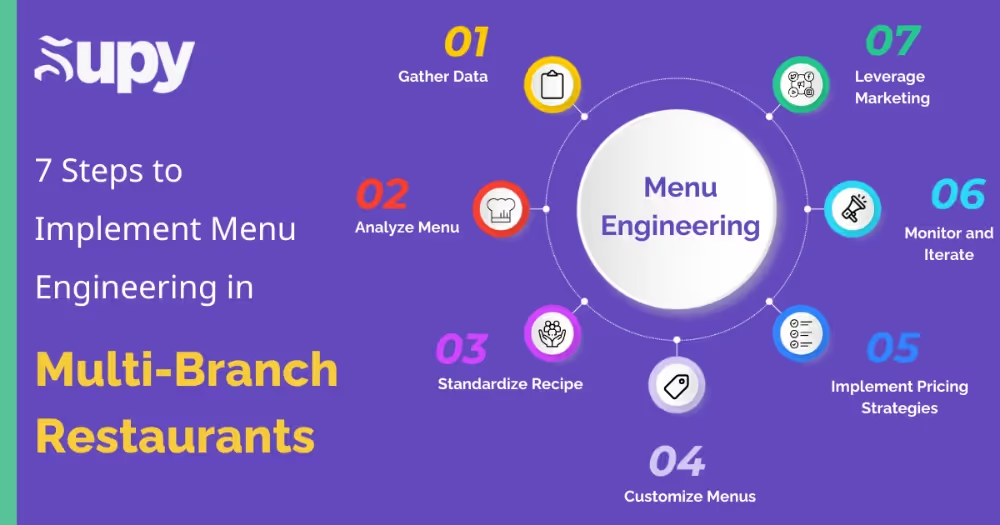
Here’s a step-by-step guide to finding the best restaurant management software for your needs:
- Understand Your Requirements: Start by evaluating your restaurant's specific needs by identifying key areas for improvement (such as order management, inventory control, or customer engagement). Consider the size of your establishment, the volume of transactions, and any unique features small business owners may need, such as online ordering, accounting software, or table management.
- Research Options: Now it’s time to explore the various options on the market. Look for software that offers essential features for restaurant operations, such as POS (Point of Sale), inventory management, staff scheduling, and customer relationship management (CRM). It’s probably also wise to compare different platforms and read reviews to understand each platform’s strengths and weaknesses.
- Evaluate Essential Tools and Technologies: While shopping for restaurant software, there are a few key features that are important to have. For instance, cloud-based solutions ensure scalability, remote access, and data security. Meanwhile, mobile apps are essential for staff and customer convenience, enabling tasks such as mobile ordering and real-time notifications.
- Test and Select: We recommend taking advantage of any demo or free software trials to test the software’s functionality before buying it. Evaluate how well the platform integrates with your existing systems and whether it meets your operational needs. You should also ensure the software is user-friendly and offers reliable customer support.
- Implement the Software: Once selected, you must now plan a thorough implementation strategy. Train your staff on using the software effectively and ensure a smooth transition by setting up necessary integrations. Establish clear protocols for data migration and system setup to avoid disruptions.
- Optimize and Review: Finally, it’s important to continuously monitor the software’s performance and gather feedback from staff and customers. Use built-in analytics to track key metrics and make data-driven adjustments. Regularly update the software to leverage new features and improvements.
6. Supy's Role in Integrating Restaurant Management Software
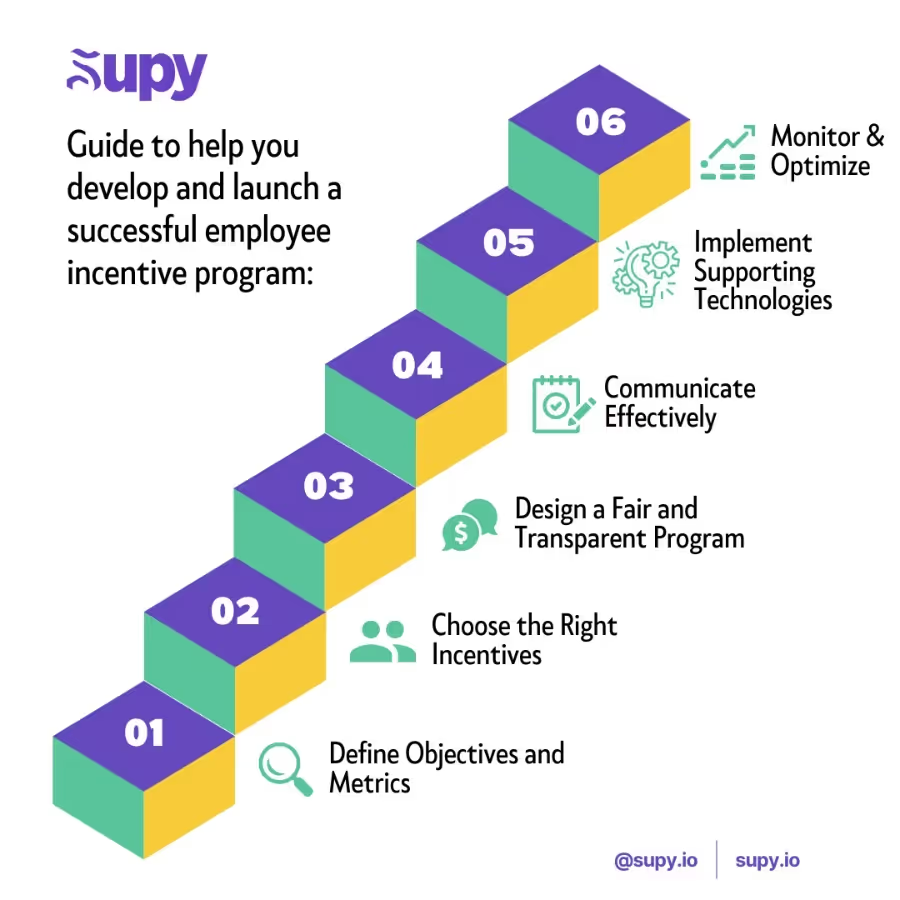
Supy offers several consulting services focused on improving your business’ inventory management practices. Here are a few ways Supy is designed to help:
- Live Data: With Supy’s Restaurant Analytics feature, you don’t need to wait for data to make decisions whenever you need to. All your restaurant dashboards are powered by live data. Plan regular and automated data fetching from your point-of-sale systems and other tools for maximum accuracy.
- Parallel Stock Counting: Accelerate stock counting and increase count accuracy by running digital, synchronized, and cross-device counting sessions with your team. Count more regularly to keep track of the variance between your actual and theoretical stock. Count items in any package and let Supy do all the quantity adaptations for you.
- Real-Time Reporting & Analytics: Track variance, stock value, stock quantity, waste, food cost, menu performance, and margin evolution on Supy’s built-in, real-time dashboards. Identify and address discrepancies immediately and avoid bad surprises at the end of the month.
- Unlock Profitable Restaurant Procurement: Track purchase value per supplier, location, and category. Understand which items are bought the most, from which supplier, and for which location to identify purchasing patterns and optimize your procurement operations.
7. Conclusion
In conclusion, investing in the latest restaurant software has the potential to transform your business. Restaurants around the world have been sold on the perks of such emerging technologies, including enhanced management efficiency, improved customer experiences, and better inventory management. As we look beyond the year 2024, expect trends like increased automation and enhanced data security to continue to shape the industry.
To learn more about how you can stay ahead of these trends, it's important to seek out expert guidance. At Supy, we specialize in helping restaurants optimize their operations through cutting-edge POS systems and tailored solutions. Why not subscribe to our newsletter to receive the latest insights, tips, and updates on how to make the most of these technologies? Or check out the Xenia app to learn how to centralize operations across your business.
Additionally, we invite you to book a free consultation with our team of experts. We'll work with you to identify the best strategies and technologies to enhance your restaurant's efficiency and growth. Don't miss out on the opportunity to elevate your restaurant management and stay ahead in the competitive F&B industry. Subscribe to our newsletter and book your free consultation today!
8. About Supy
Supy is the best restaurant management software platform tailored for multi-branch restaurants and franchises. With unbeatable features like real-time inventory tracking, smart procurement systems, and advanced analytics, Supy helps restaurants manage their various demands effectively. Whether centrally adjusting stock levels or optimizing supply chain relationships, Supy provides the tools restaurants need to thrive in a dynamic industry.
For the latest expert insights, download Supy’s ebook: The Ultimate Guide to Reducing Food Costs in Multi-Branch & Enterprise Restaurants.
Ready to find out more? Schedule a demo with Supy today and take the first step towards a streamlined, profitable future.




